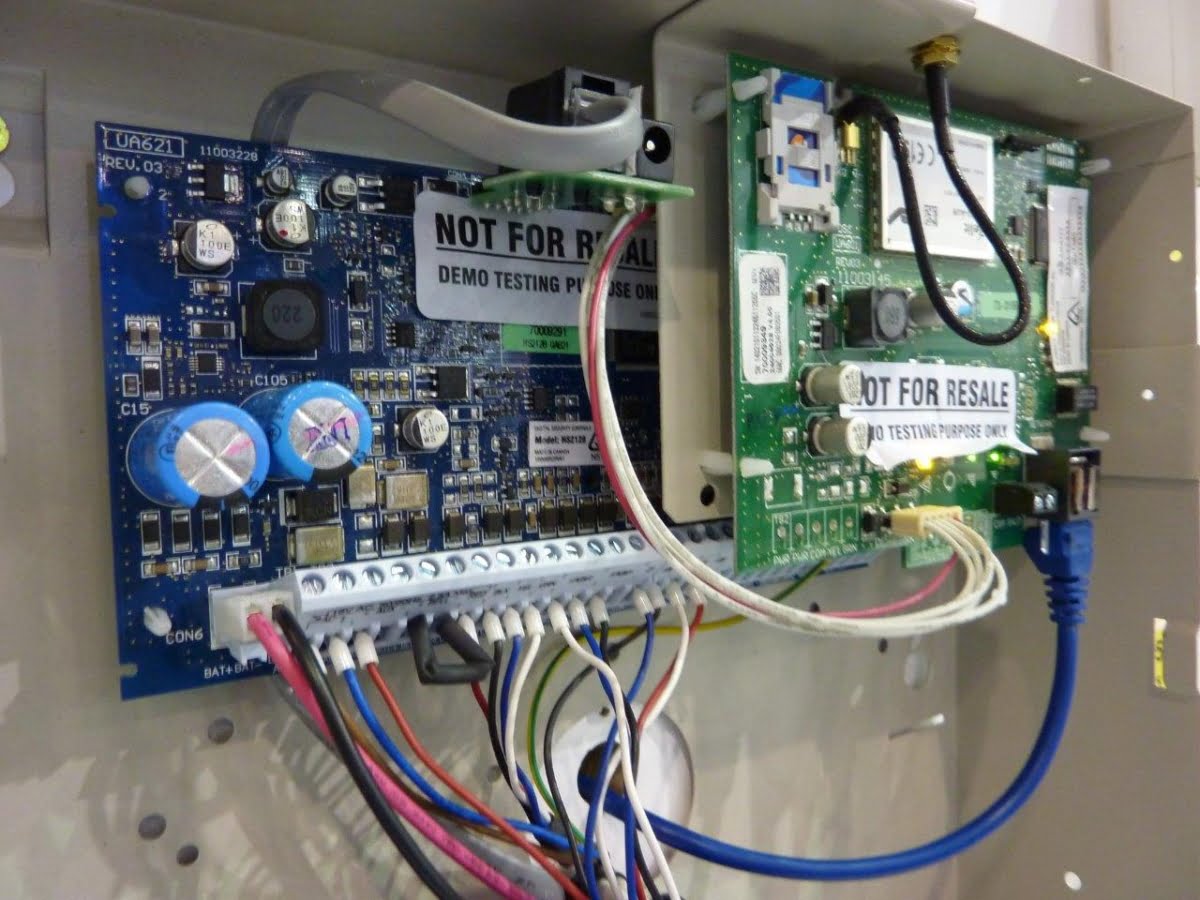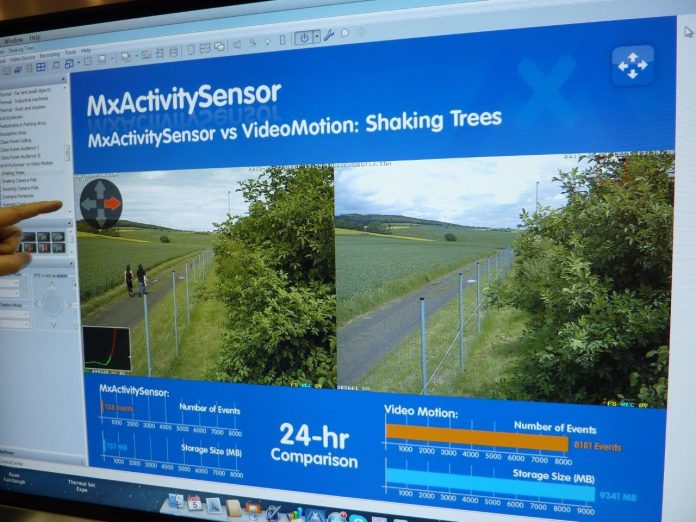Once a year we get a chance to take a look at the latest electronic and networked security solutions, giving us face time with the best new product releases, as well as offering a sense of where the market is heading.
SECURITY 2014 was a good show. The whole Melbourne experience was enjoyable for everyone and in my opinion, the exhibition space was the best I’ve seen locally in 20 years covering the security industry. There was a good atmosphere, even though the commodious space meant there were tidal moments of quiet on the first and third days. Many companies put a lot of work into their stands and the general effect was agreeable. As usual, the big Diversified team put on a good show and things ran smoothly throughout.
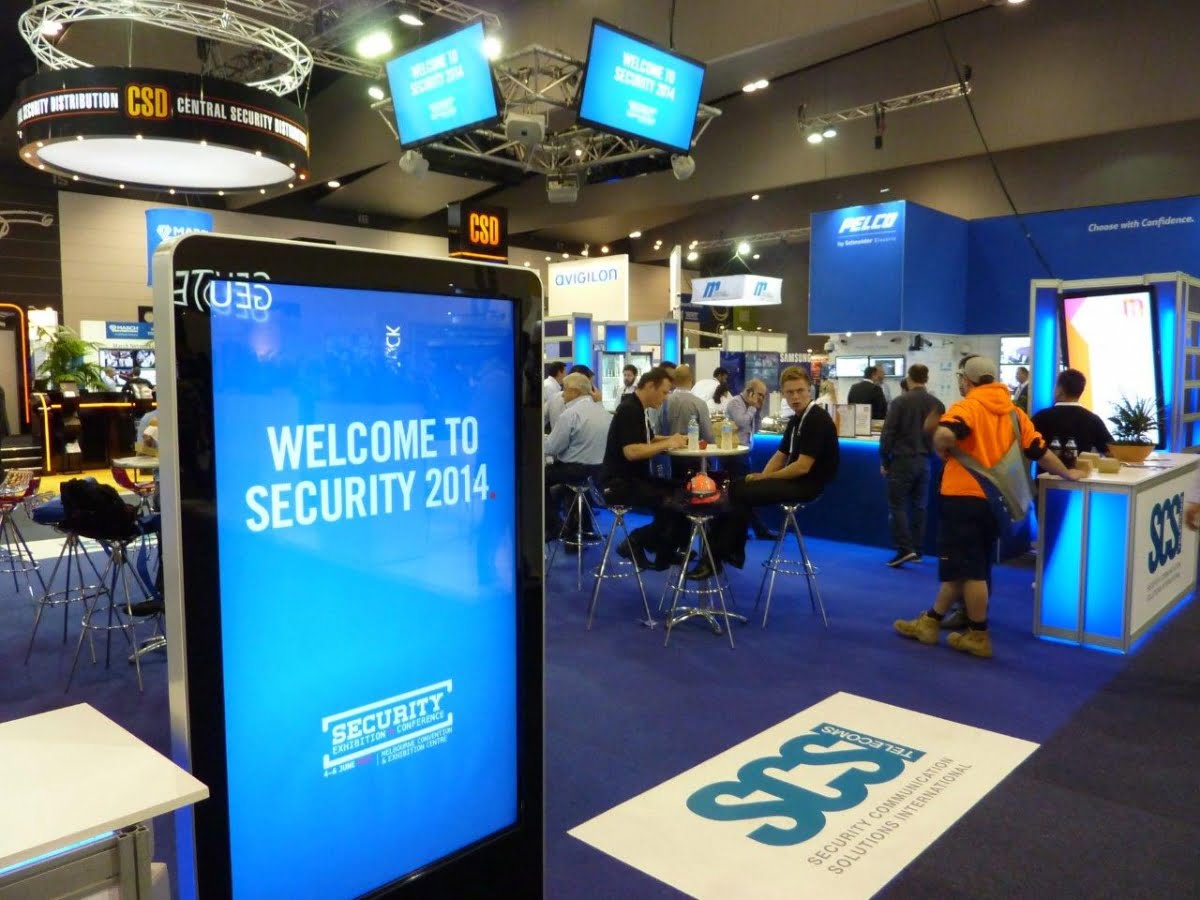
Walking around at Security 2014 was in some ways the same as my experience in 2013. That’s probably not surprising. Much of the vapourware from last year’s exhibition has spent 12 months making the transition from prototype to market. For that reason, a number of key products at Security 2014 were market releases of raw solutions we’ve seen before.
Overall, there were more cloud solutions at Security 2014 than we saw last year, though it seems to me it will be manufacturers enhancing existing hardware offerings who win out in this sector on the basis of real cash flow. A software-based startup might struggle over the mid-term in the current price-sensitive market. Certainly, when things get competitive in cloud it will be those at the top of the food chain who have the most margin to play with.
Generally speaking, I think consumer-grade cloud may face security issues in the medium term and that means the security industry should look towards owning their ecosystems. Something else that I don’t think has been adequately addressed is the fundamental security level of smart devices and some of the software apps they drive on. It’s fair to observe that the security level of a system is commensurate with the lowest security level of any smart device with authorised access.
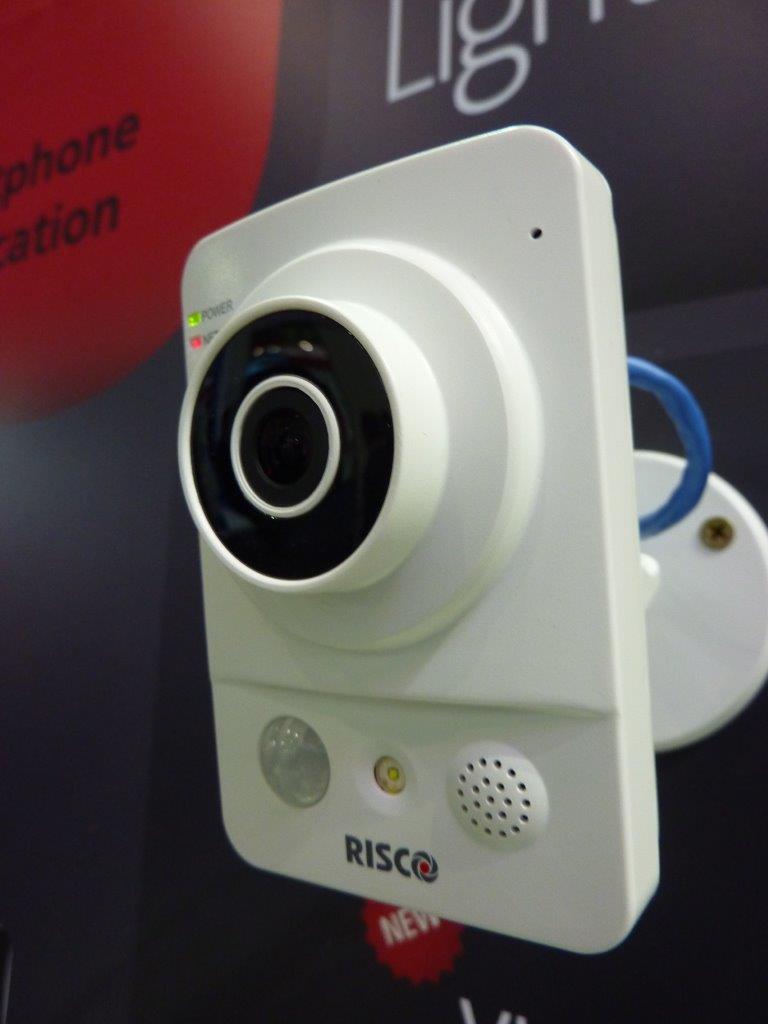
At Security 2014 I saw Genetec’s Stratocast, Risco showed its cloud-supported alarm panels with video verification. Risco’s VUpoint video-enabled intrusion detection was interesting. It’s a live video verification solution that seamlessly integrates with Risco’s intrusion alarm panels. Speaking of which, Risco LightSYS 2 now offers 50 alarm inputs.
A key release in this space was Hills’ VSD-1, which combines a quality HD camera with remote accessibility. Hills is a big company with plenty of clout and the VSD-1 camera has been thoughtfully selected for performance. Some of the cameras in the domestic video monitoring market are sadly lacking but VSD-1 offers a proper surveillance camera.

It was not announced at the show – the report of Telstra buying into SNP came a few weeks after – but it seems likely we can expect something in this market segment from TelstraSNP Monitoring. SNP pioneered remote video monitoring and TelstraSNP is likely to be integrating video verification and domestic video monitoring into future solutions. Chance of heavy cloud, 100 per cent.
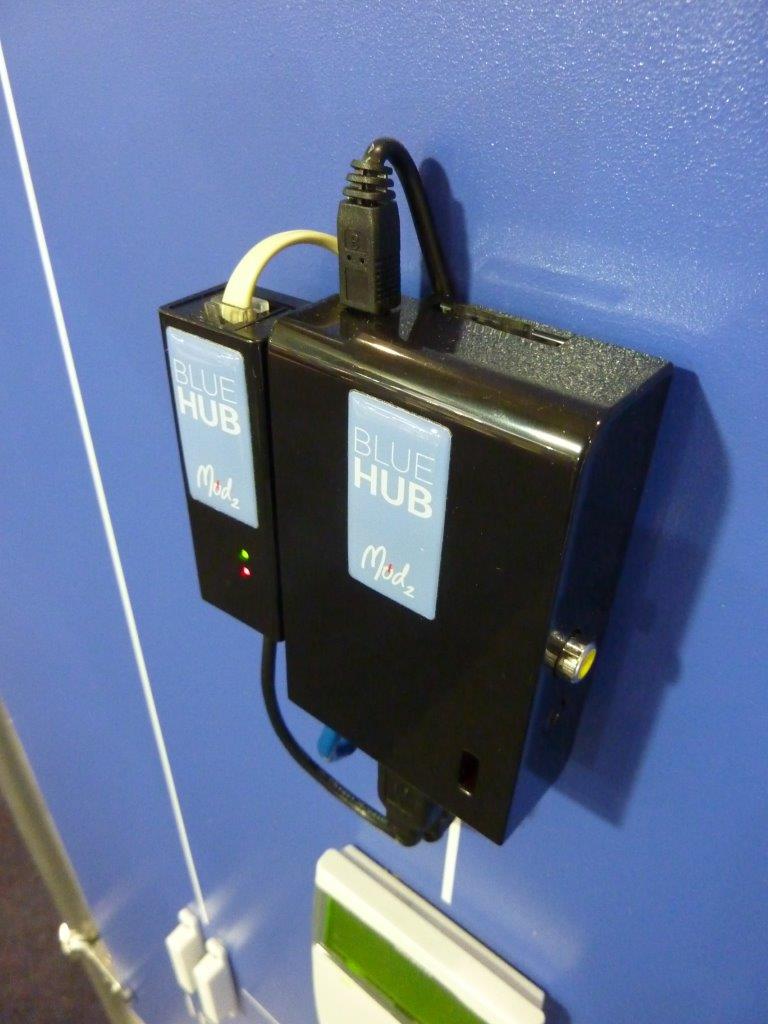
BENS showed its neat Bluehub IP alarm monitoring solution, which is designed to be extremely easy to install and commission and while people on the CSD stand were asking about cloud-based access control product Webtegriti, it was not at the show. Inner Range is a stickler when it comes to releasing product only when its engineers are well satisfied. We’ll see Webtegriti in the poly soon enough.
At the heart of Inner Range’s cloud offerings will be the company’s Sky Tunnel solution, which means installers don’t need to mess around with router configuration. I don’t know much more about Sky Tunnel than this but the fact Inner Range is working on a plug and play backend says something fundamental about the future of a large part of the access control market.
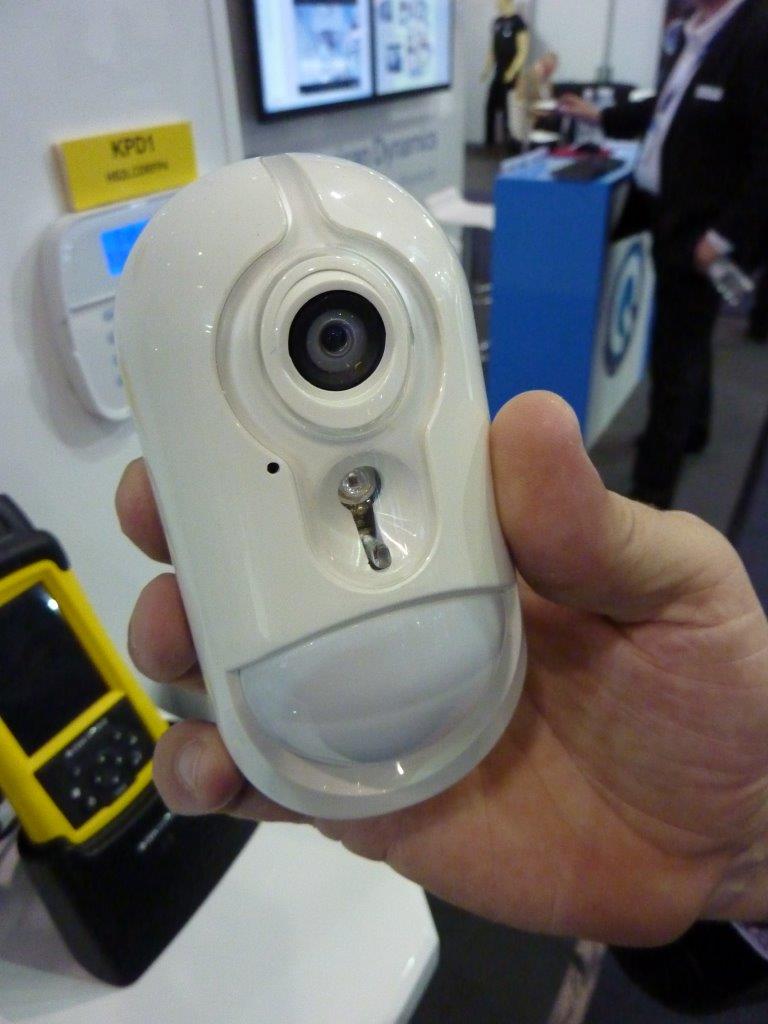
Automation solutions for domestic and small commercial – there was some of this last year but I think the gathering speed of the transition of the alarms industry towards automation was one of the key trends at Security 2014. There are constellations of new sensor types appearing and remote controlled automation solutions are increasingly capable of managing them in a user-meaningful way. It’s nice to see carbon monoxide sensors, flood sensors, noise sensors, temperature sensors and all the rest.
“A key release in this space was Hills’ VSD-1, which combines a quality HD camera with remote accessibility”
Home automation has always been a bit perilous when it comes to security electronics. I think this comes down to the alarm industry’s fundamental internal contradictions. First, that users demand new technology but don’t want to pay fair value for it. Second, that home automation is an up-sell and for too many alarm installers the art of selling hinges on being the cheapest, not the best performing solution. Sadly, you can’t install cutting edge automation tech at the same time you are shimmying out of your daks on price.
Riding to the rescue are control panels that offer both low base-price side by side with the ability to expand into serious automation solutions. Part of the push towards automation is coming from the U.S. market, where big telcos are looking to commoditise automation and own a slice of the RMR from America’s 50 million monitored lines.
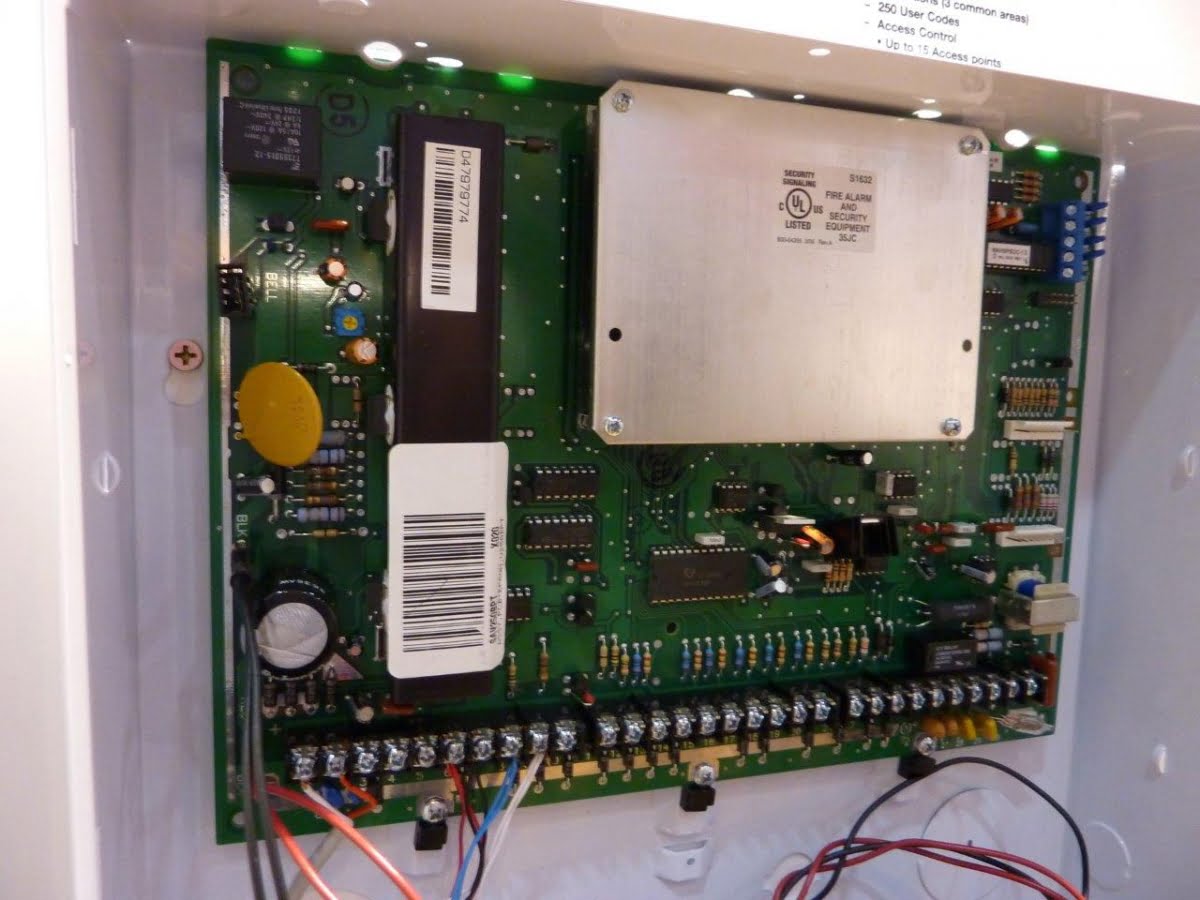
In the wake of releases like AT&T’s Digital Life, a very strong response is coming from the likes of Honeywell with Tuxedo, Vista and Lynx; DSC with NEO, Bosch with its new 2000 and 3000 panels, Paradox with Insight (CSD,) Risco with LightSYS and Agility 3 and Linear subsidiary 2GIG with the Go!Control alarm panel, which includes GSM and a Z-wave chip (Ness has 2GIG locally) for the sensing of everything. All these solutions and more were at Security 2014 and they are taking traditional alarm panel technology rapidly towards automation, with new user interfaces, integrated intercom, access control and remote management using smart devices.
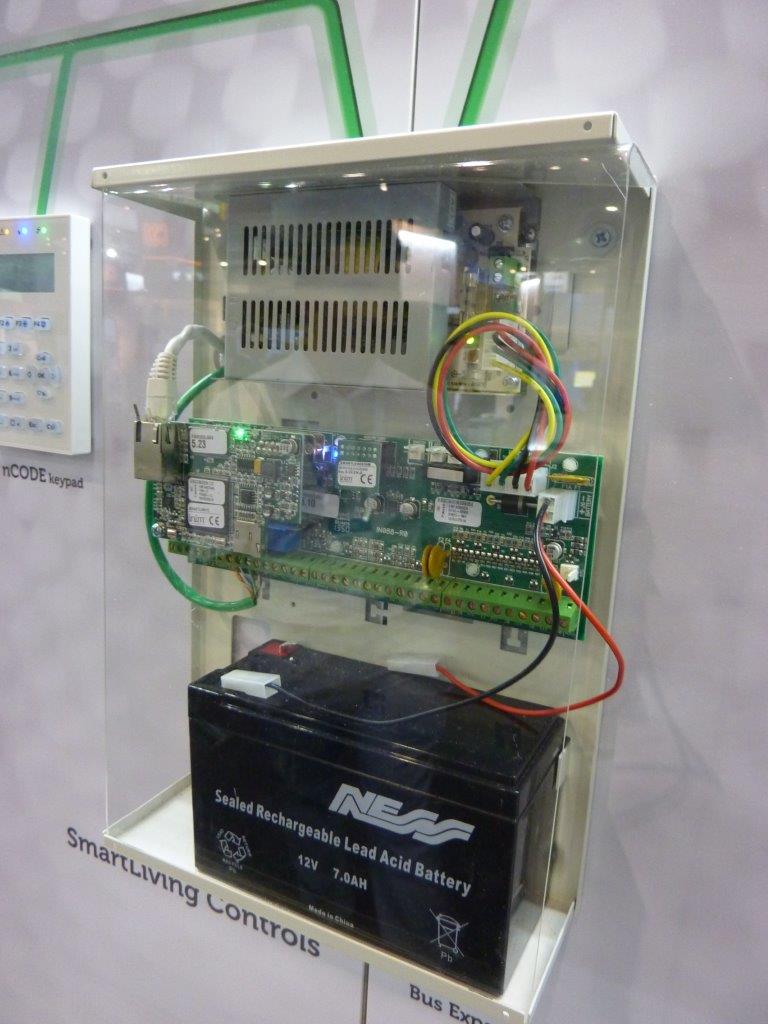
Tangled up in all this is video verification, which was another solidifying technology at Security 2014. I saw the latest offerings from DSC, Risco and Honeywell as well as the HD77 alarm sensor from CSD’s Paradox range – it’s the first high-end intrusion sensor I’ve seen that incorporates a 720p fixed lens camera. The HD77 is part of Paradox Insight solution, an integrated HD video/audio alarm system.
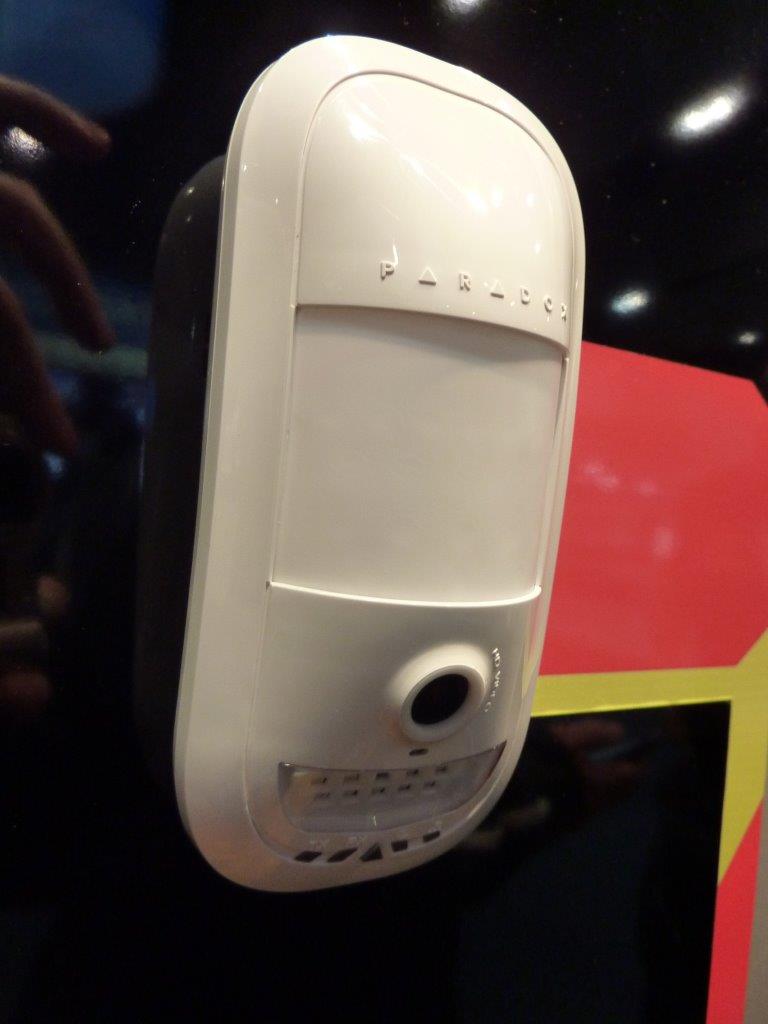
Things that caught my eye in the alarms segment were the more capable Honeywell Vista and the Bosch Solution 2000 and 3000 alarm panels. The new Bosch systems are designed to offer mobile connectivity and plenty of expansion capability and come with sleek new interfaces. There’s SMS over IP and IP alarm reporting, as well as support for the Bosch Remote Security Control app. Automation and video integration arrive in the next couple of months.
There were also some fun things when it came to alarm sensors. Hills’ Xandem TMD was the most interesting in my opinion. If you’re a clever installer, Xandem TMD could be the keystone to your entire business. It’s not just that the hardware works well, it’s that this core functionality proffers endless opportunities for leverage. Xandem is committed to expanding TMD’s capabilities through software development, giving it applications in automation and monitoring of foot traffic in real time, as well as offering zoning.
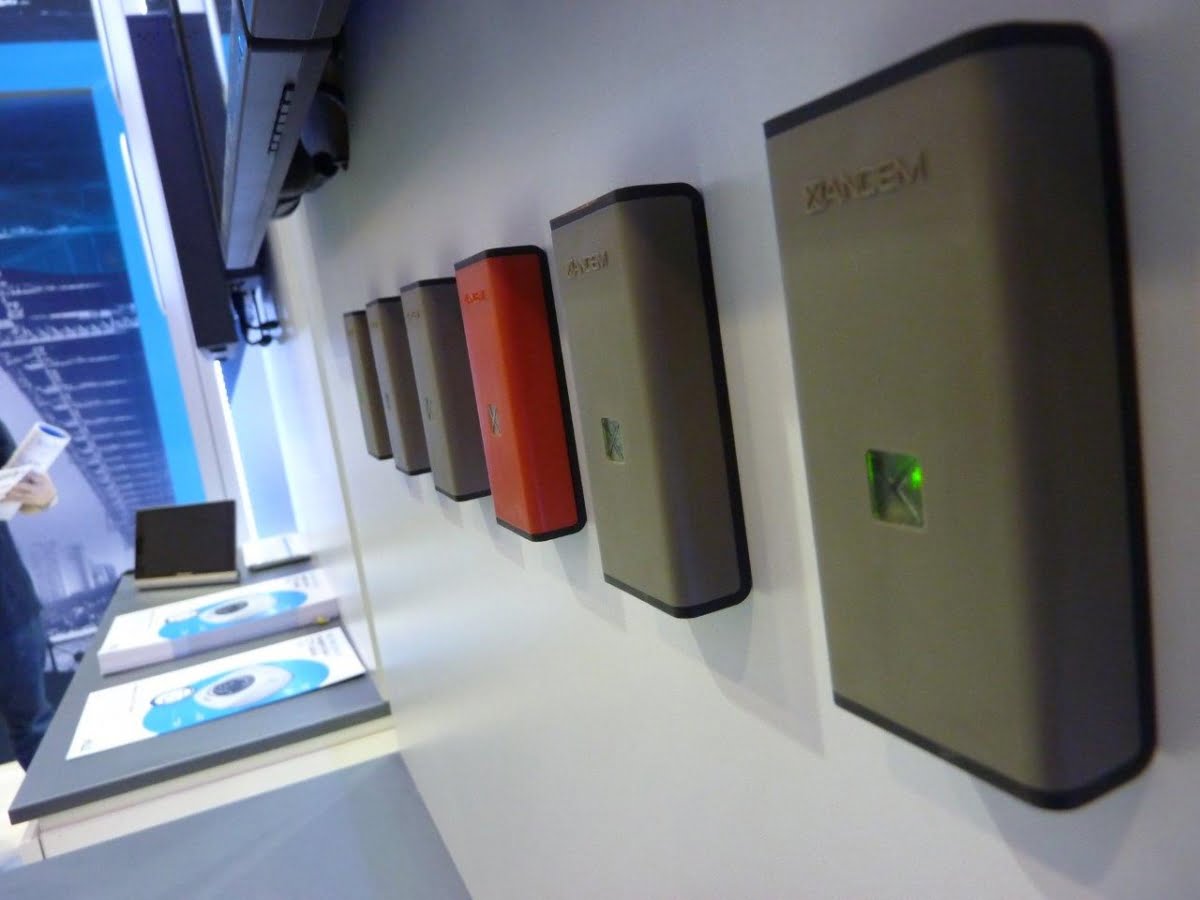
Something that’s appealing about Xandem TMD is price. Sure, it costs $800 to cover a 500 square metre space but that space can be complicated and changeful in real time. Masking – well there’s no such thing with Xandem TMD. Nor can you creep up on the system or suffer from thermal false alarms. This solution’s fundamental discretion, ability to integrate with existing alarm systems and future development trajectory made it a standout at Security 2014.
Other new sensors I saw included Xtralis’ ADPRO long range PIR, Redwall from Hills and Denso from Bosch Security Systems. What was interesting about some of these solutions was their ability to have detection zones tuned using real time commissioning programs. These high tech intrusion detectors are designed to protect larger external spaces of various shapes.
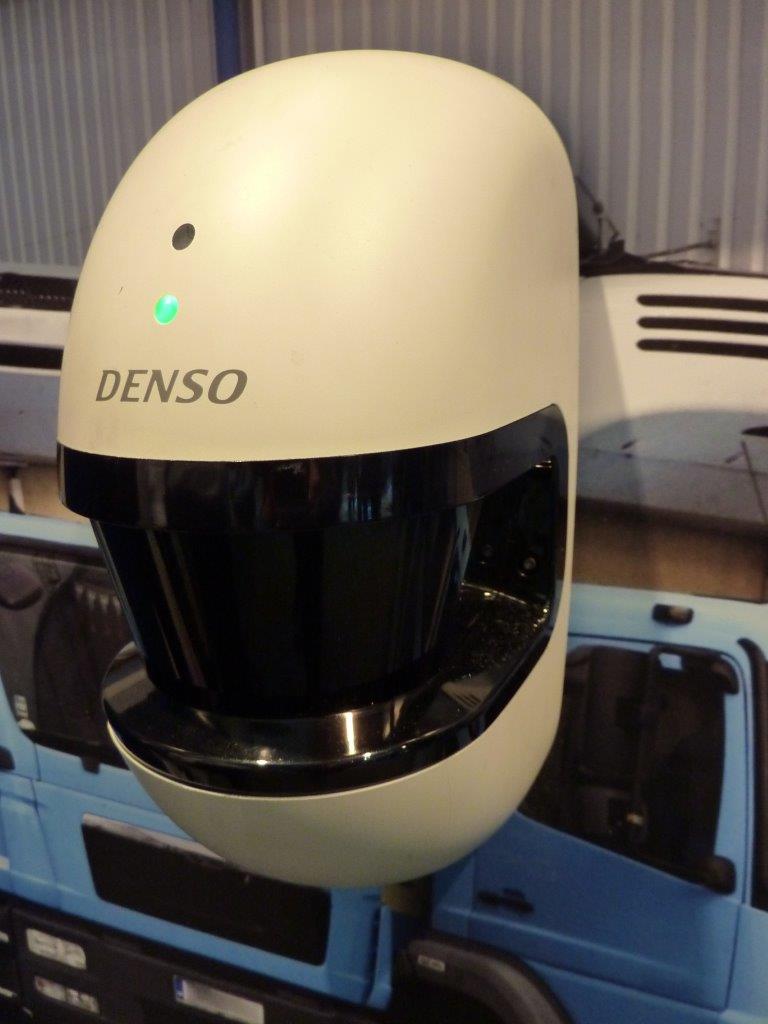
Another interesting ‘new’ alarm product I met at Security 2014 was Bold Technologies’ Manitou range of central station, PSIM and automation solutions. These solutions have not been promoted in Australia before and through local distributor, SCSI, they give central stations a proven option when it comes to empowering operations.
Jagging a mention in alarms is Patriot Systems, which has allied with Inner Range. The combined solution features remote guard tour services, one-click video verification and there are upcoming features for direct control of Inner Range’s Concept and Integriti Systems. Inner Range also showed its SkyCommand mobile applications for the Multipath-IP alarm transmission system.
I like what Inner Range is doing. If you want to secure remote system management using third party smart devices while retaining the existing monitoring infrastructure, then you need ownership of the reporting ecosystem. Suretek, SCSI and TelstraSNP are all doing something similar and I think this is the future of quality alarm monitoring.
Walking into Security 2014, I expected to get leaned on by 4K but no. While Ultra HD is out there with quality cameras like the new Axis P-1428, there are no unrealistic expectations from manufacturers at this time. UltraHD is a topical application that comes with the intense benefit of being based on a true video standard.
Instead the trends in CCTV came from other directions. Hemispheric cameras – everyone now has one. IR cameras – yes, this might have been predictable but IR is well on the way to ubiquity. I even saw hemispherics with IR support – of particular note was Hikvision’s handsome 6 Series DS-2CD6362F-I, a 6MP, 360-degree camera with 4 chunky IRs and 5 video streams.
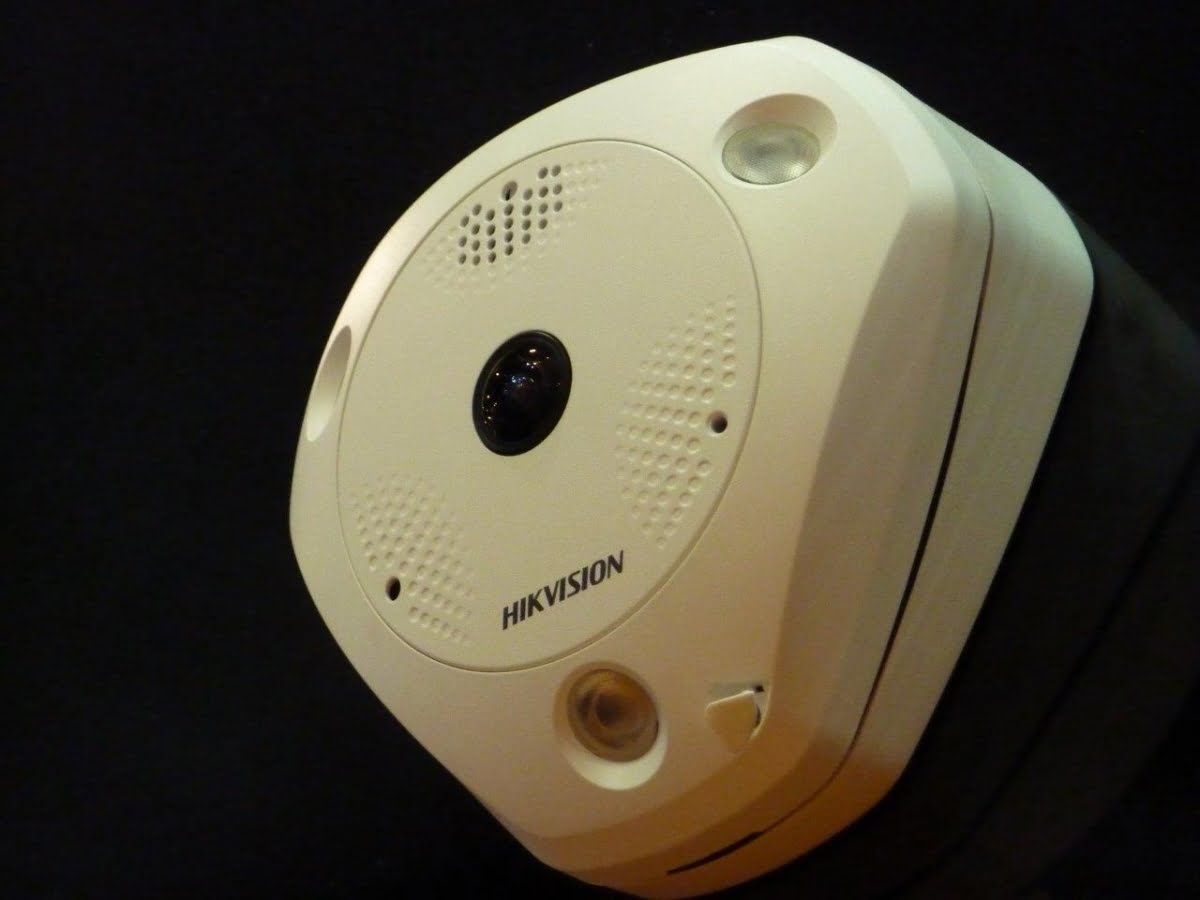
This unit has capable WDR and is available in an indoor and an outdoor IP66 vandal model. Hemispherics have been traditionally weak with WDR and low light – the latter thanks to their compact image sensors, so I think the move to IR support is a good one. Hemispherics are all about flexibility and combining IR-enhanced low light performance with real WDR capability delivers on that expectation. This camera exemplifies Hikvision’s induction as a technology leader. It’s not surprising this should happen but it seemed more noticeable to me at Security 2014, looking at the company’s 4-Line and 6-Line cameras. Hikvision’s 4-Line series seems like a pivotal release for the world’s biggest CCTV manufacturer. With the 4-Line Hikvision has for the first time forced its way into the leading group of camera manufacturer’s in terms of performance.
Something else that’s noteworthy is depth of range when it comes to IP cameras. Of the larger manufacturers, Axis Communications, American Dynamics, Sony, Vivotek, Dahua and Hikvision all have very strong lineups. Not only are camera ranges extensive, but they increasingly move in lockstep. If one maker releases something fresh, most competitors will match that product within 12 months. We’ve not seen that before.
Everyone has an economy retail camera, everyone has a rugged transport camera, everyone has an economical indoor dome and an economical IP66-rated outdoor dome. It should not be supposed that all these camera-lens combinations perform identically but it is a declaration about what certain parts of the market are demanding. For some end users; price, not performance; governs camera choices. For others, security is defined as performance.
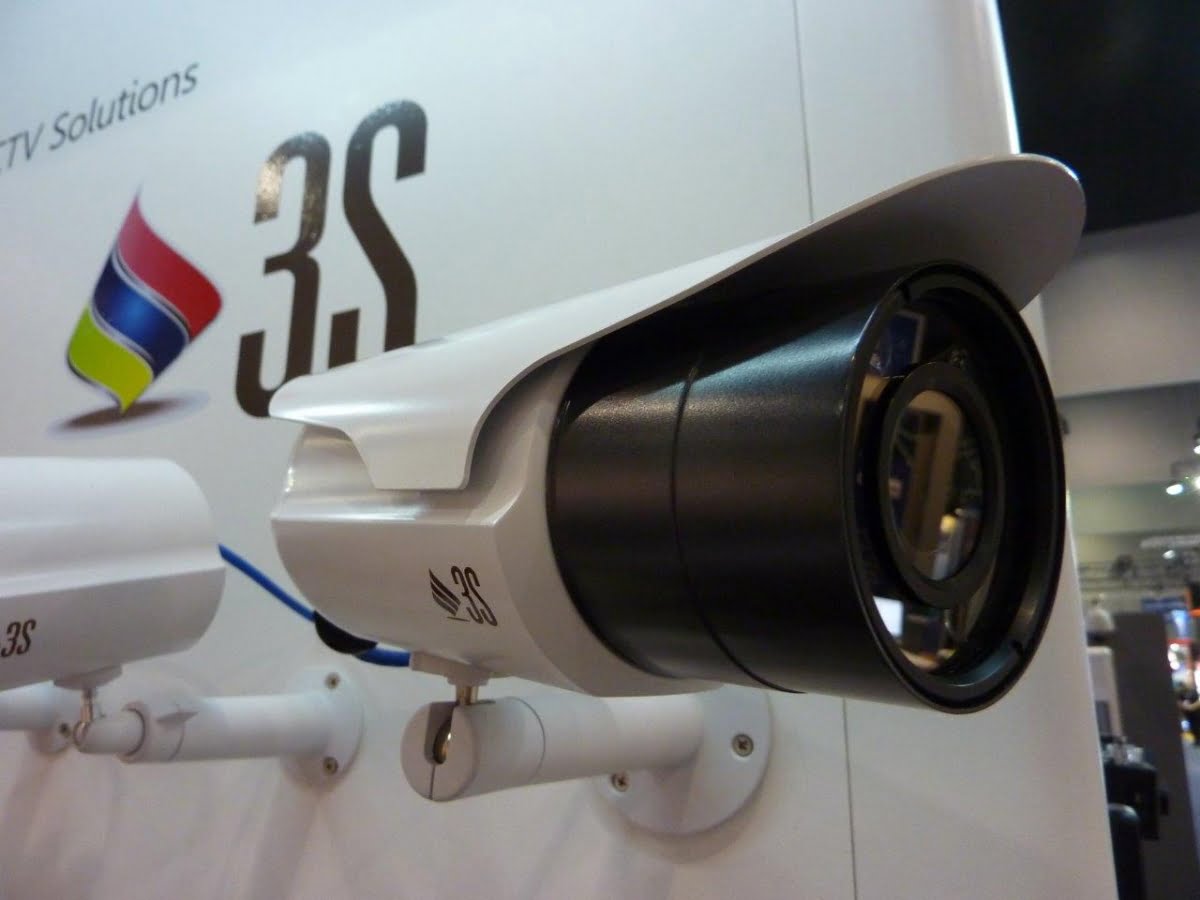
I liked Sylo’s extensive 3S range of IP cameras, including compact domes, IR hemispherics, IR bullet cameras, full body cameras, Wi-Fi cameras and very serious external PTZs. Sylo has been hunting around for a product range of its own since Avigilon opened a local office and 3S might be the ticket. It’s a quality range with strong performance and competitive pricing and it’s exclusive to Sylo. The company also showed the reputable Opgal thermal imaging camera, the 3D face recognition Artec ID solution, Huawei gear and more.
We’ve seen some of these cameras before but strong releases at Security 2014 included AD’s Illustra 625, Panasonic’s 6 Series – the full body version was at the show, and Sony’s Generation 6. QSS was showing its Alumia range at the show, which spreads from entry level to premium and is available in 1.3, 2 and 3MP variations. Also on display was Samsung’s WiseNet III from EOS Australia, which is strong in WDR and bandwidth management.
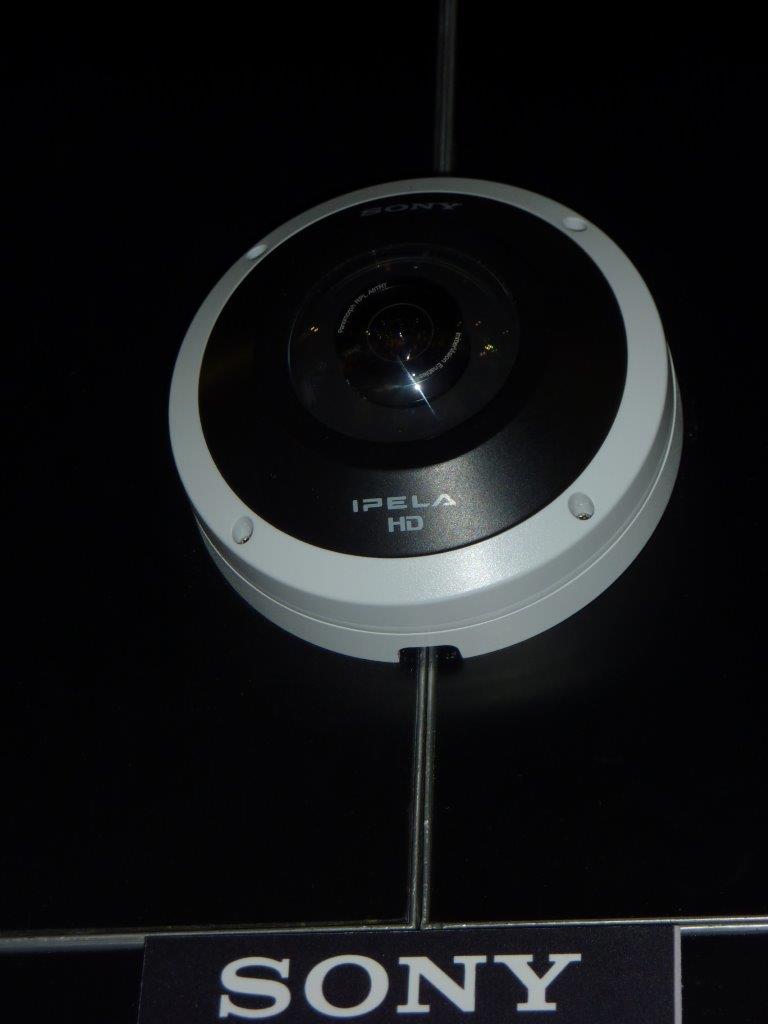
I was impressed with Sony’s 360-degree hemispheric camera, too. You need to approach hemispheric cameras recognizing the characteristics of the panomorphic lens – they are about situational awareness in most applications, rather than court admissible face recognition at medium or longer ranges. But their ability to give 360-degree situational awareness in moderately large environments is unparalleled. Sony’s Gen 6 is arguably the best of the current generation.
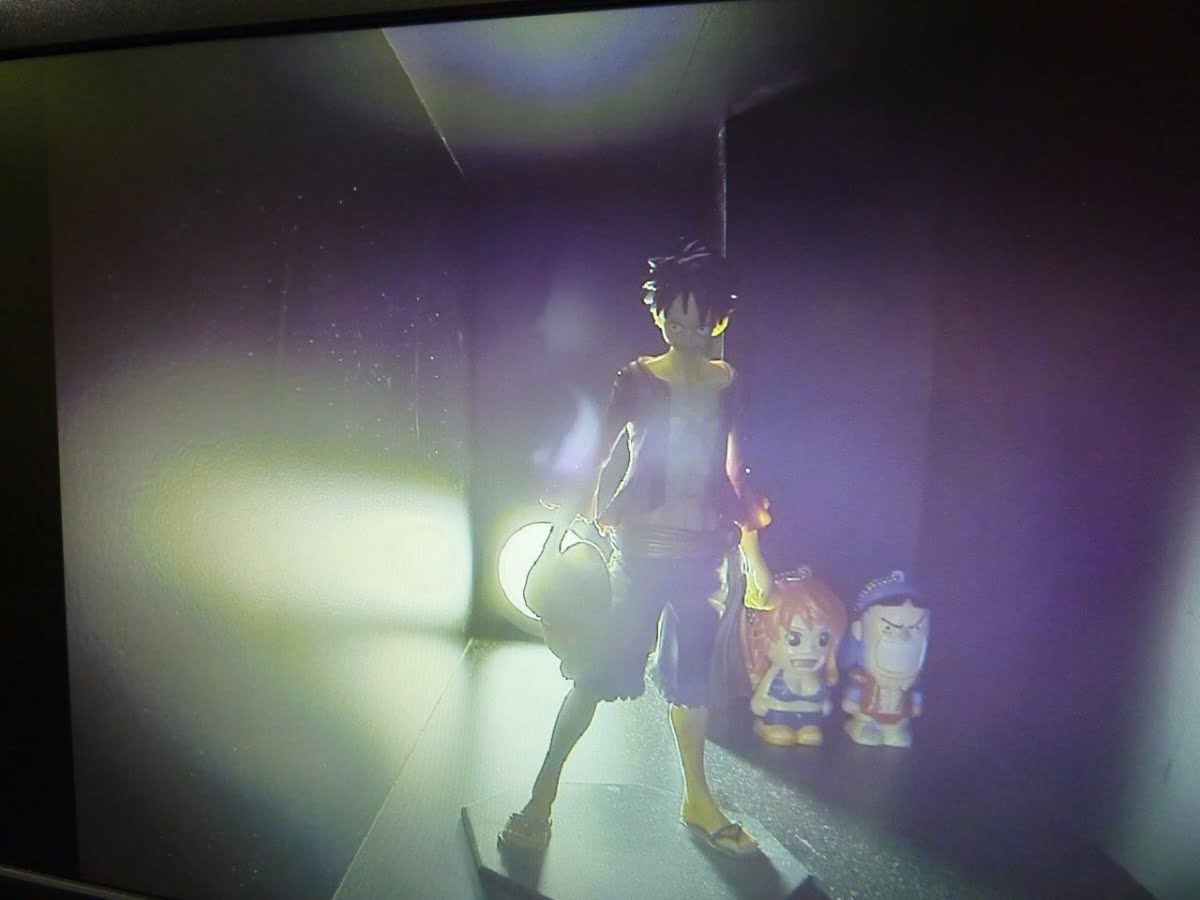
Vivotek's WDR PRO
Vivotek released its WDR PRO camera at Security 2014 and its performance really was excellent. Not only was the unit strong in backlight, it was strong with no light whatever. Vivotek also showed its 1.2MP transport camera with EN50155 compliance and IP66-rating.
While we’re talking about low light capable full body cameras, Hikvision’s ½-inch 1080p DarkFighter is another one to watch. Field testing shows this camera to be right up there with the best in terms of low light performance while being weirdly good in general applications as well. Many low light cameras bring their improved night time performance at the cost of native resolution but Darkfighter is a different animal altogether.
Axis Communications always releases a serious spread of new product each year and didn’t disappoint in 2014. I saw a hinged camera for warehouse environments – saves breaking a drop pole mount camera and fitting when hit by an over sized vehicle. Axis is pushing its higher end tech into more affordable cameras.
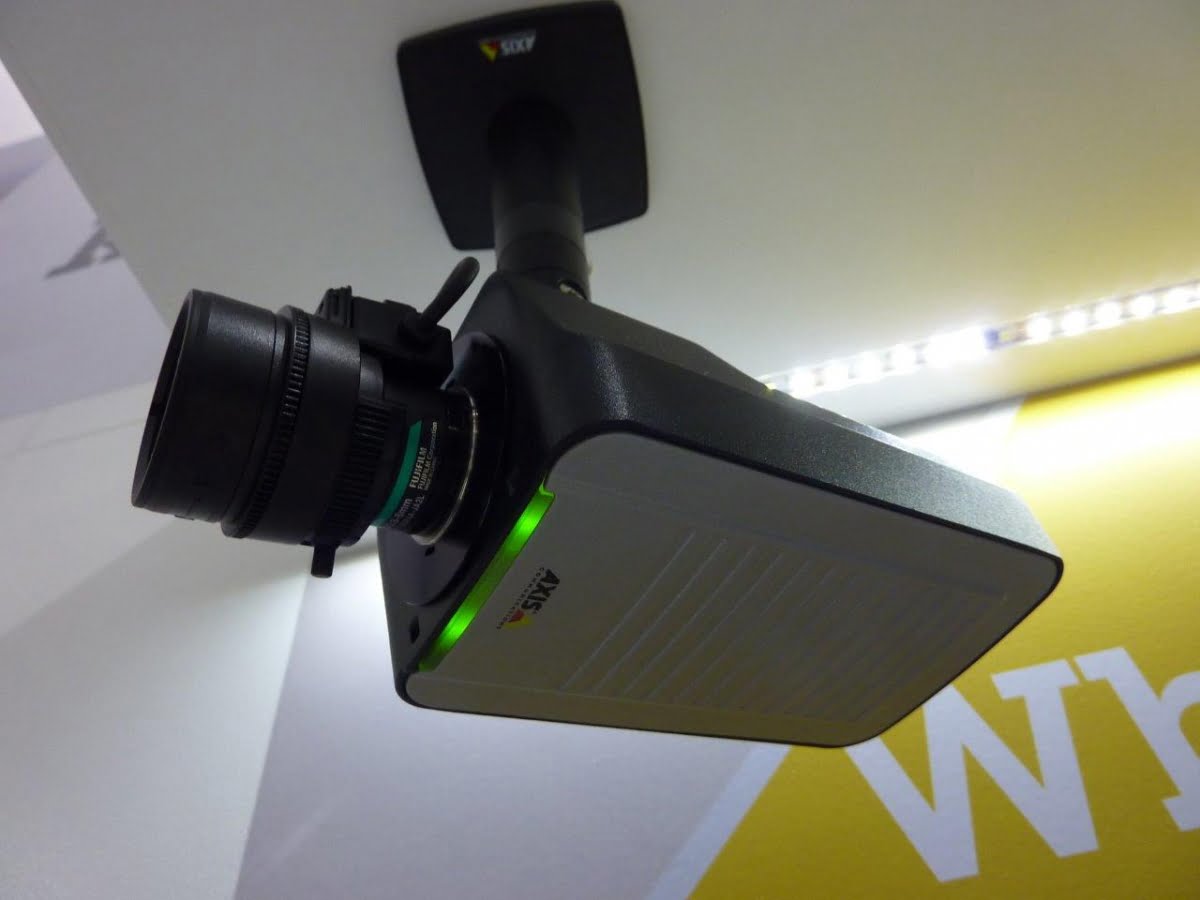
Conversely, the Q1615 and Q1615-E (external) combines pretty much all of Axis’ functionality in one awesome unit. Axis Q1615 cameras not only offer full HD resolution but new stuff like enhanced wide dynamic range (Axis’ WDR-Forensic Capture), Lightfinder technology, electronic image stabilization and shock detection. The cameras automatically switch settings between high dynamic scenes and Lightfinder mode.
I also saw Axis’ new P1224-E covert pinhole with separate back box, the M3024-LVE and M3025-VE domes, the 1080p P1355 with P-Iris, a big stainless dome for industrial applications – this camera is doing well with colour rendition and spot lights as notice. It is reputed to handle low light really well, too. Q3505 – 1080p, 2nd generation WDR, second gen Lightfinder, shot detection. Wall mount PTZ, the P5415-E, designed to be painted – the camera is well insulated so it will not overheat if painted a dark colour.
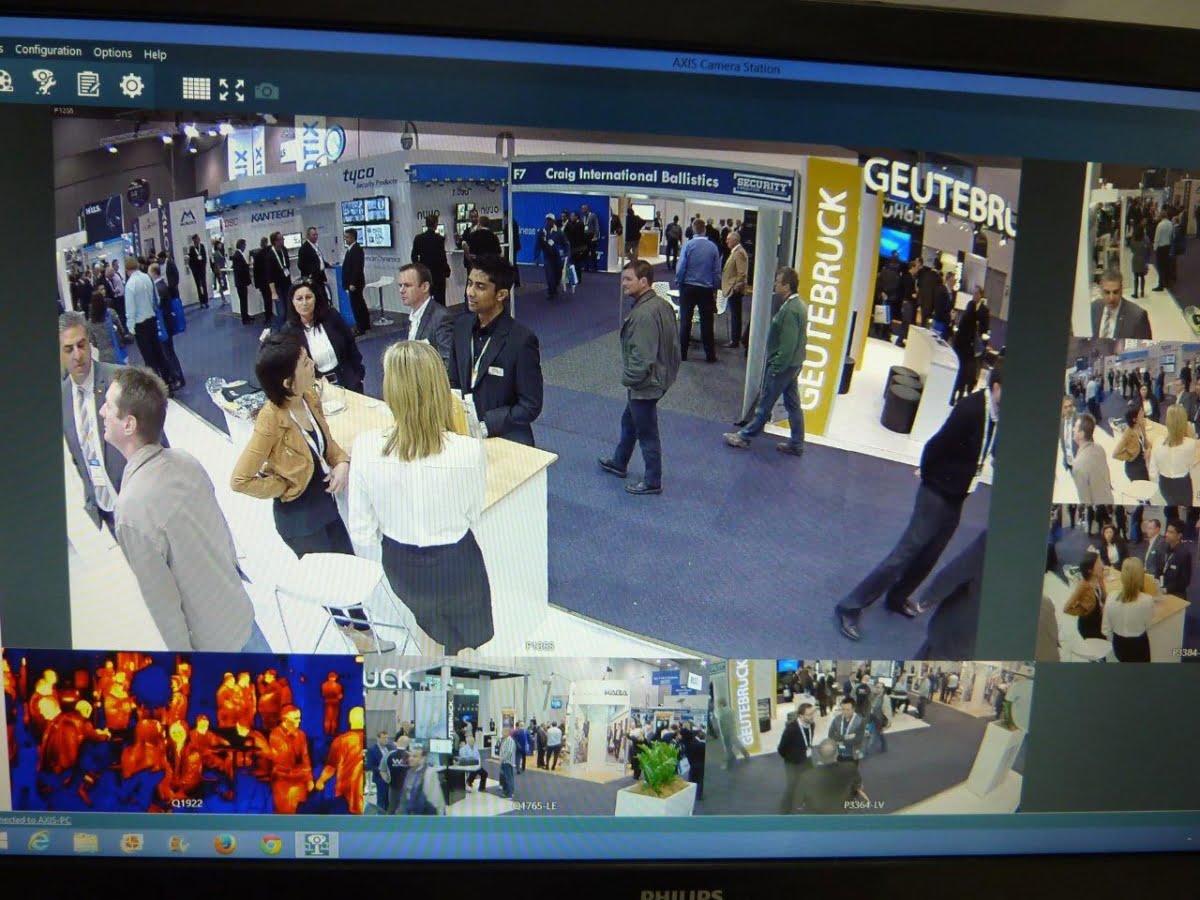
Axis Camera Station runs the show and it’s a really nice piece of kit. Very simple to negotiate and offering users most features they’d require for smaller and even medium applications. Along with everything else it supports up to 4 local monitors – various cameras go to various monitors.
“BENS showed its neat Bluehub IP alarm monitoring solution, which is designed to be extremely easy to install and commission”
Something else that was nice was Raytec’s new IR VARIO Hybrid, which combines infrared and white light in a single solution. This new light source works with external sensors or alarm inputs to provide event triggered lighting giving surveillance and deterrence.
VARIO Hybrid allows a lighting solution configured to offer discrete surveillance until there is movement, when white light is activated by movement, allowing colour images of events, a deterrent to crime as well as safety and security for authorised personnel.
PTZs have not died. They have become more capable and more affordable. There were some fine offerings from market leaders at the show – Panasonic, Sony, Axis, AD and Hikvision with its 150m IR supported PTZ were all impressive. Price is coming down in this area, too.
Analogue. I didn’t expect to see any analogue this show but there was Samsung’s new 1000-line BEYOND Series and it was a nice looking unit, indeed. Bosch, too, has new analogue surveillance cameras.
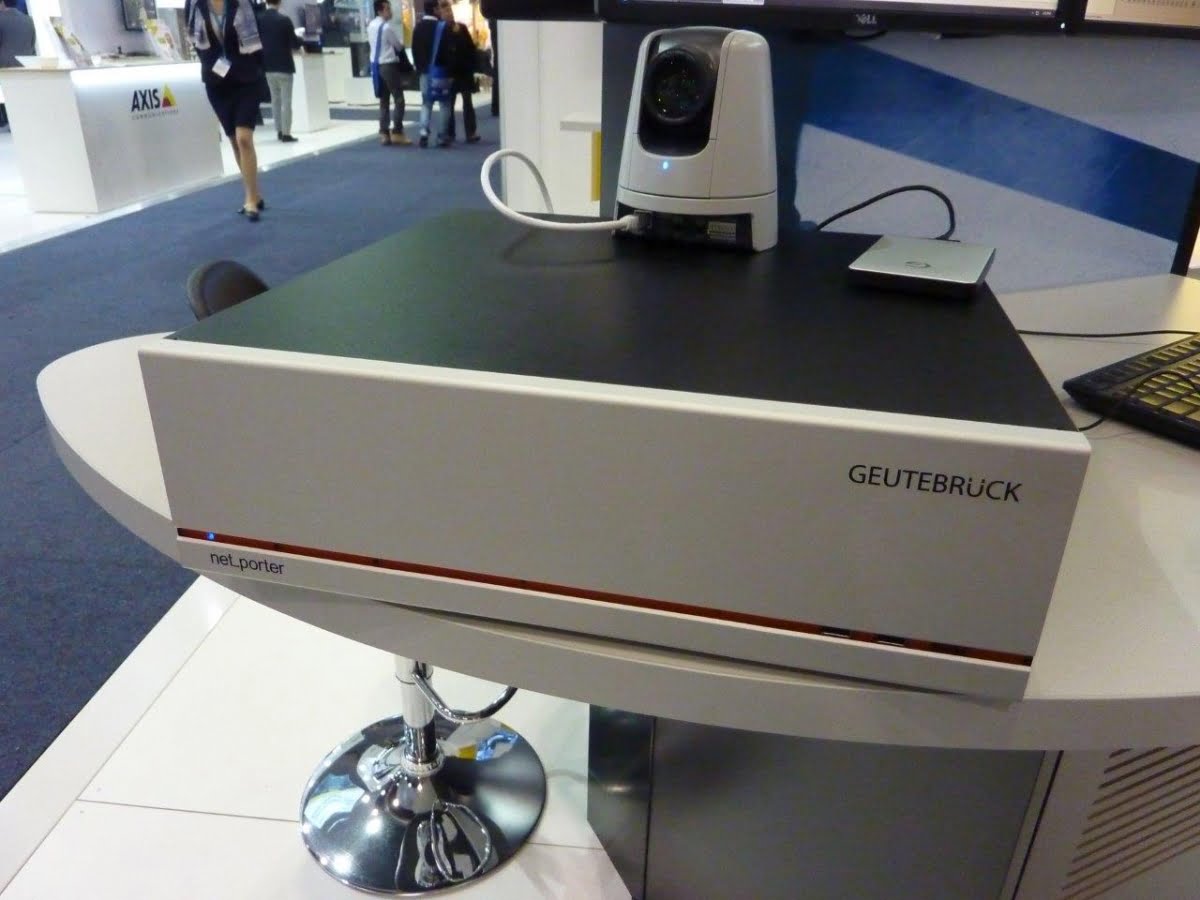
DVRs have not died – instead they show every sign of being with us, possibly forever. NVRs meanwhile, show every sign of becoming DVR-ish. Compact, affordable, powerful, expandable, self-installing (to a point), with local storage and cloud access. Milestone’s Husky was the perfect example, as was Geutebruck’s 16-input net-porter NVR with its onboard PoE switch.
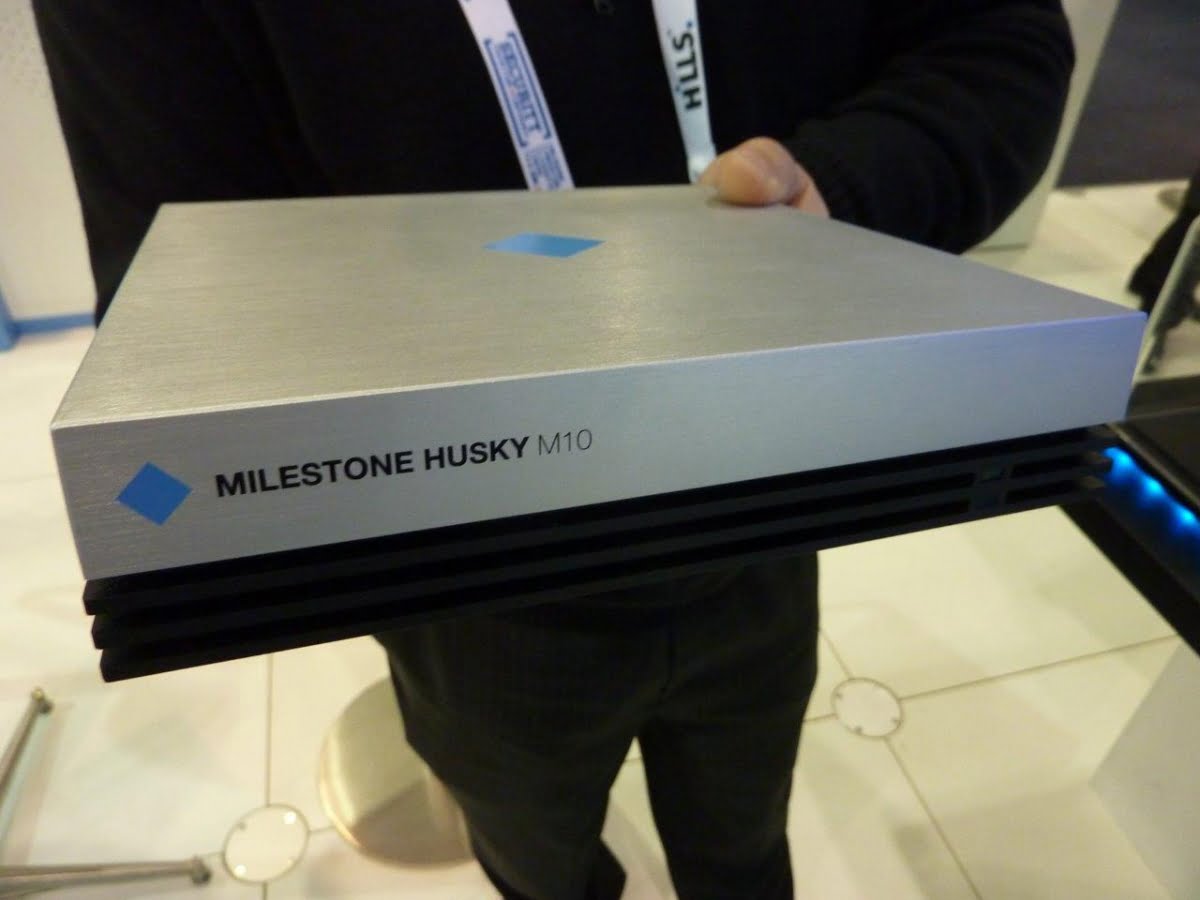
I like the looks of Genetec’s rugged, fanless SV-32. The SV range is now thoroughly mature and the SV-32 supports up to 32 camera inputs, allows local monitoring and recording, and has an Installer Assistant tool. Sylo also has a tough fanless unit and there’s certainly something attractive about a solution capable of shrugging off ingress of fan-clogging dust which is certain to lead to overheating and drive failure over time.
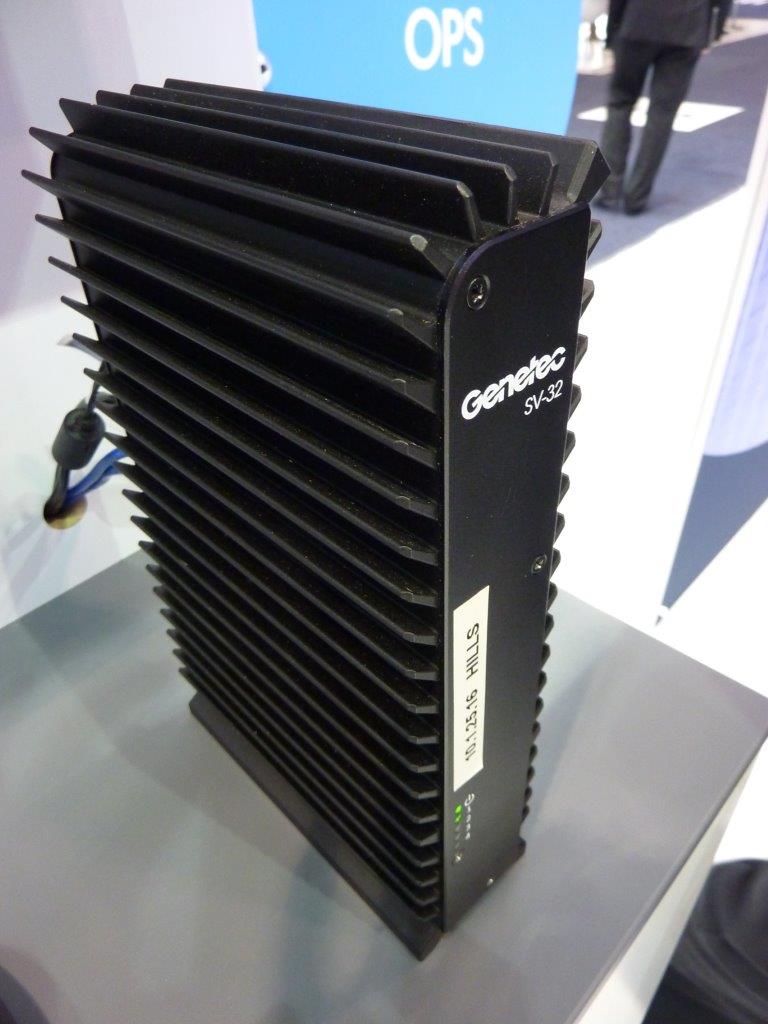
Integration was a feature of this show. There were more integration products than I think I’ve seen before and this probably should not surprise. Companies are increasingly teaming up to jointly cover areas in which they don’t specialise. United Technologies PRISM, Lenel, Genetec, Geutebruck, March Networks Command and Honeywell. I liked PRISM and G-SIM from Geutebruck.
Something else that was really noticeable was video analytics. Sure, iOmniscient’s IQ Face won Security 2014’s product of the year, but that was only part of it. On multiple stands, including Sony, Geutebruck with GTect, Mobotix with MxActivity Sensor, Avigilon, Bosch, C.R.Kennedy (Axxon) EOS (Samsung), Hills, CSD with Hikvision and Avigilon, video analytics was being used routinely to analyse or detect movement in viewed spaces. In terms of ubiquity, video analytics has well and truly arrived. Standouts in video analytics included Mobotix MxSensor Briefcam Syndex and Axxon Next.
A new release for Security 2014 was CBIT technology in Bosch’s IP cameras. As well as handling image processing, CBIT powers Bosch’s IVA and Motion+ from a single processing module. What’s driving IVA development is a push to reduced WAN bandwidth and storage demands but what’s important is that IVA R&D is ongoing.
“Things that caught my eye in the alarms segment were the more capable Honeywell Vista and the Bosch Solution 2000 and 3000 alarm panels”
Networking. It sounds obvious but there were developments in networking, too. Hills’ Ruckus R700 mesh and point-to-point 802.11n 5GHz wireless IP network solution was an interesting release. Designed for challenging and noisy urban applications it has a range of 15km – ideal for most public surveillance applications. Another expression of network-based thinking was the fact so many cameras were being touted as bandwidth-light.
Also on the network side was Comnet’s Netwave solar off-the-grid remote surveillance solution. Comnet, distributed locally by Allguard, was also showing a substation-rated switch, HDMI over optical fibre, Ethernet extenders and more. Comnet’s range really looks to me to cover every electronic security application in thoughtful and robust ways.
Things I saw of interest in access control were Inner Range’s Sifer reader, CEM Emerald on the QSS stand – we’ve seen it at our office before but not at an expo – and Tecom Challenger v10’s video integration on the Hills’ stand. This latter has been coming a while and it’s looking good. Inner Range Webtegriti, which we didn’t see at the show but have seen in pre-release gets a reserve jersey.
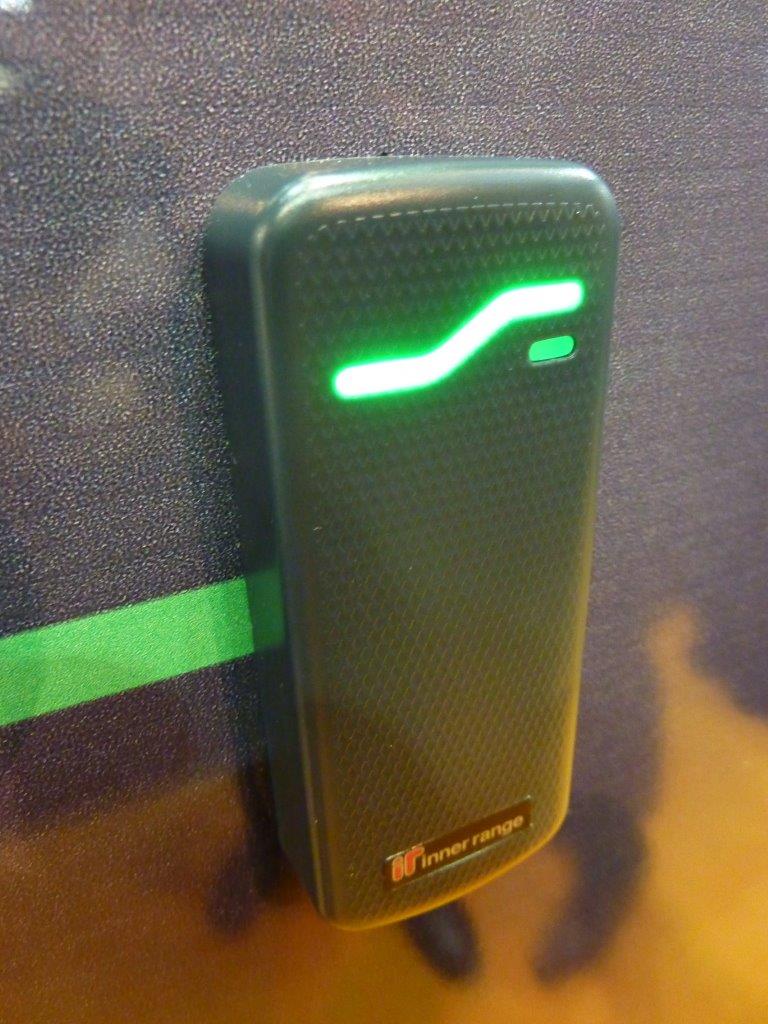
Of these, Inner Range’s SIFER reader is especially interesting. It’s the first time Inner Range has manufactured its own prox readers. SIFER is a multi-drop RS-485 reader that supports MIFARE cards, including Inner Range’s own DESfire EV1. SIFER readers and cards deliver AES encryption right through to the access module – that’s way better security than Wiegand readers.
SIFER readers use a superset of OSDP protocol, are IP64-rated and 16 readers can connect in series to the dedicated RS-485 reader port on an Integriti Intelligent LAN Access Module. Of course, SIFER says something else, too. Inner Range is now strong and confident enough to drive its own future across multiple layers of technology. That the company recognises the value of its own brand should come as no great surprise.
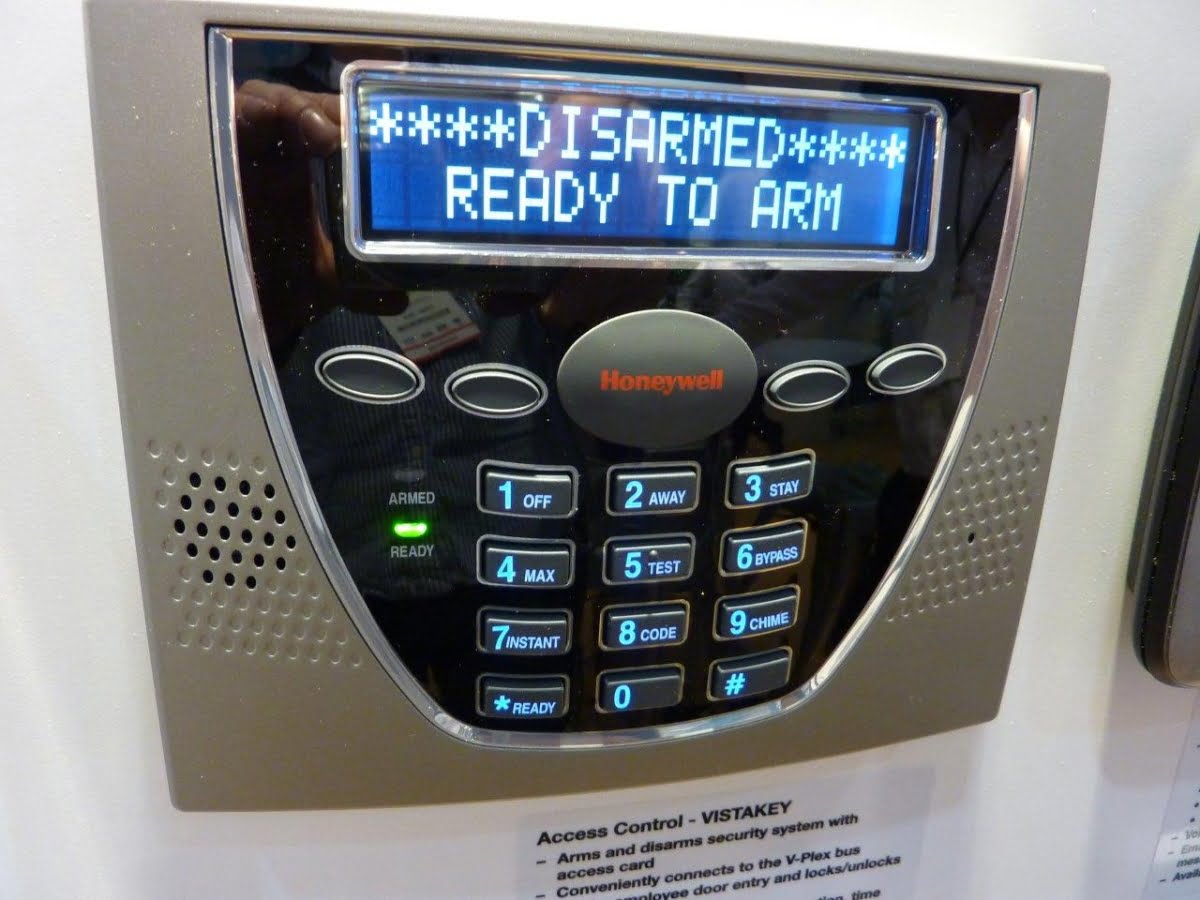
When it comes to product development across a range of technological disciplines, I have to recognise the achievements of Honeywell. In an era where we’ve seen many famous manufacturers revert to the status of OEMs, Honeywell has prospered. Given the company’s manufacturing includes intrusion, alarms, access control, automation and more, this is a fine achievement.
If Honeywell does not have the largest product catalogue in the electronic security industry, I’d be surprised. Strong offerings on the Honeywell stand included a more advanced Vista alarm and automation panel, the latest WIN-PAK PE security management solution, excellent NVR solutions including the mighty 256-input HUS-NVR-7200A-E, touch screen intercoms and more.
“There were also some fun things when it came to alarm sensors. Hills’ Xandem TMD was the most interesting in my opinion”
Thermal cameras. FLIR is the market leader here and showed the FC-Series R whose performance we’ve raved about. I also liked the thermal and optical Mobotix M15-D. The thermal and optical combination is usually limited to the highest end applications and it makes the M15-D a powerful tool. Running thermal and optical alongside each other unquestionably improves situational awareness. This combination further empowers Mobotix MXActivity Sensor. You just can’t beat thermal for intrusion detection and that means it's the bomb for video analytics. What does virtually 100 per cent accurate IVA mean operationally? It means your storage needs are blown to smithereens. It means you can record in real time when you need to and at the highest resolution you have. That's a seriously big deal.
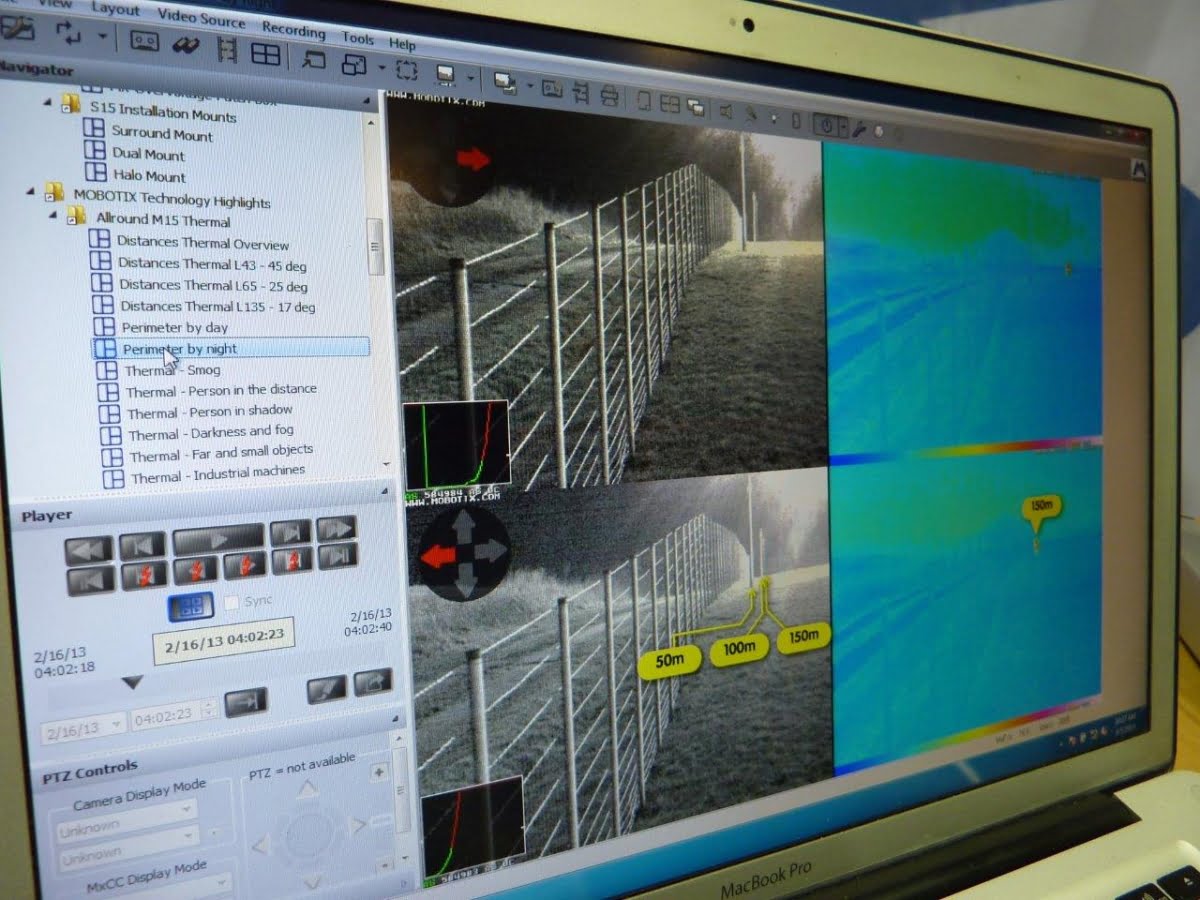
Canon. This company actually has a deep history in IP CCTV but has been quiet for a number of years. No more. Anyone thinking the company’s release of a big range of IP cameras last year was a final broadside before turning away should think again. Canon has just acquired VMS maker Milestone Systems and the company had a strong footprint at Security 2014.
I was asked a few times at the show what jumped out for me in new products and the absence of a clear response from my inner voice then and now suggests we’ve gone through a year of evolution not revolution. That does not mean there weren’t some good things at Security 2014, it just means they weren’t unexpected developments. It’s disappointing that Inner Range Webtegriti was not at the show because it would have probably have taken the gold star in 2014.
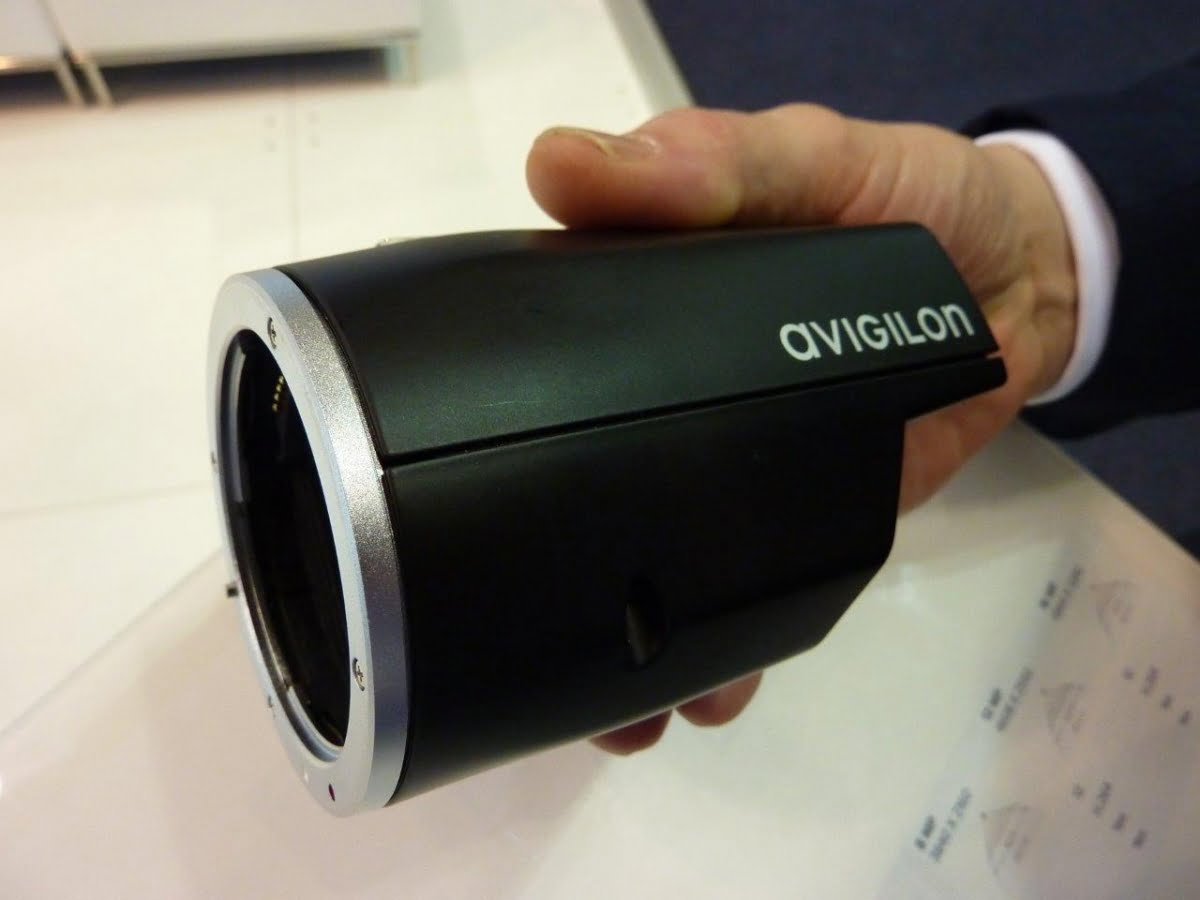
Things I liked at Security 2014 in no particular order included Sony Generation 6, Panasonic 6 Series, DSC NEO, Xandem TMD, Paradox HD77, Vauban IP access control, Hikvision’s entire 4-Line range but in particular the full body camera. I also liked a couple of units from Hikvision’s 6-Line range including DarkFighter and the DS-2CD6362F-I hemispheric with IR. Briefcam’s Syndex and AxxonNext from AxxonSoft via C.R. Kennedy were also quality offerings.
Other favourites included INTEVO from QSS, Honeywell Vista, Inner Range SIFER reader, Avigilon’s compact new versions of its entire camera series, Samsung’s 1000-line analogue camera as well as its WiseNet III lineup. I liked Bosch’s 2000 and 3000 alarm panels, the ADPRO PIR, Sylo’s 3S lineup, Milestone Husky and Vivotek’s WDR PRO was impressive. There was also Ness’s 2GIG, Geutebruck’s G-SIM management solution, United Technologies’ PRISM, and Avigilon’s Control Centre, which always impresses me.
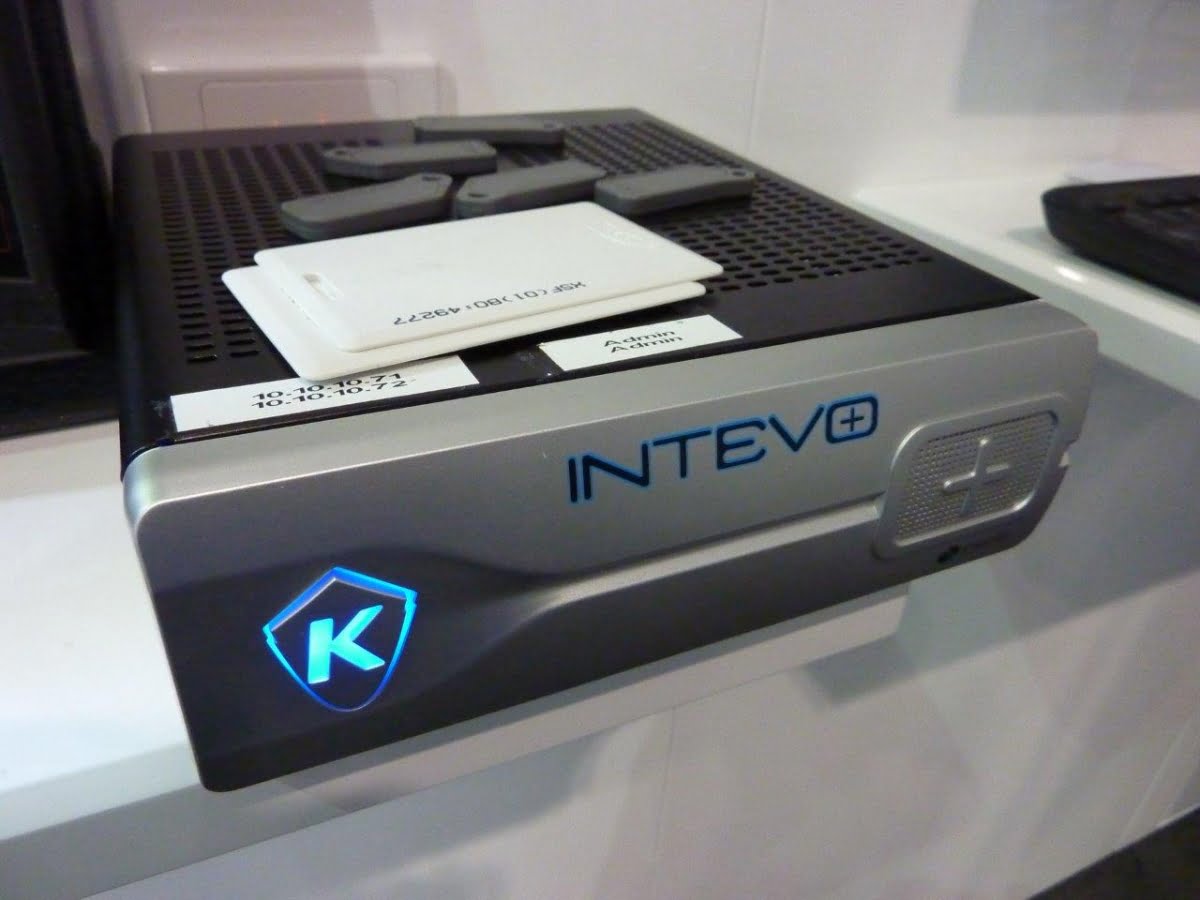
I did not see iOmniscient’s IQ FACE, so I can’t make a call on the official Best Product of Security 2014. There were also stands I missed – another half a day would have been welcome – for some reason this year there was not enough time to see everything despite putting in long hours. This suggests manufacturers and distributors are carrying more product, or more complicated product, than before.
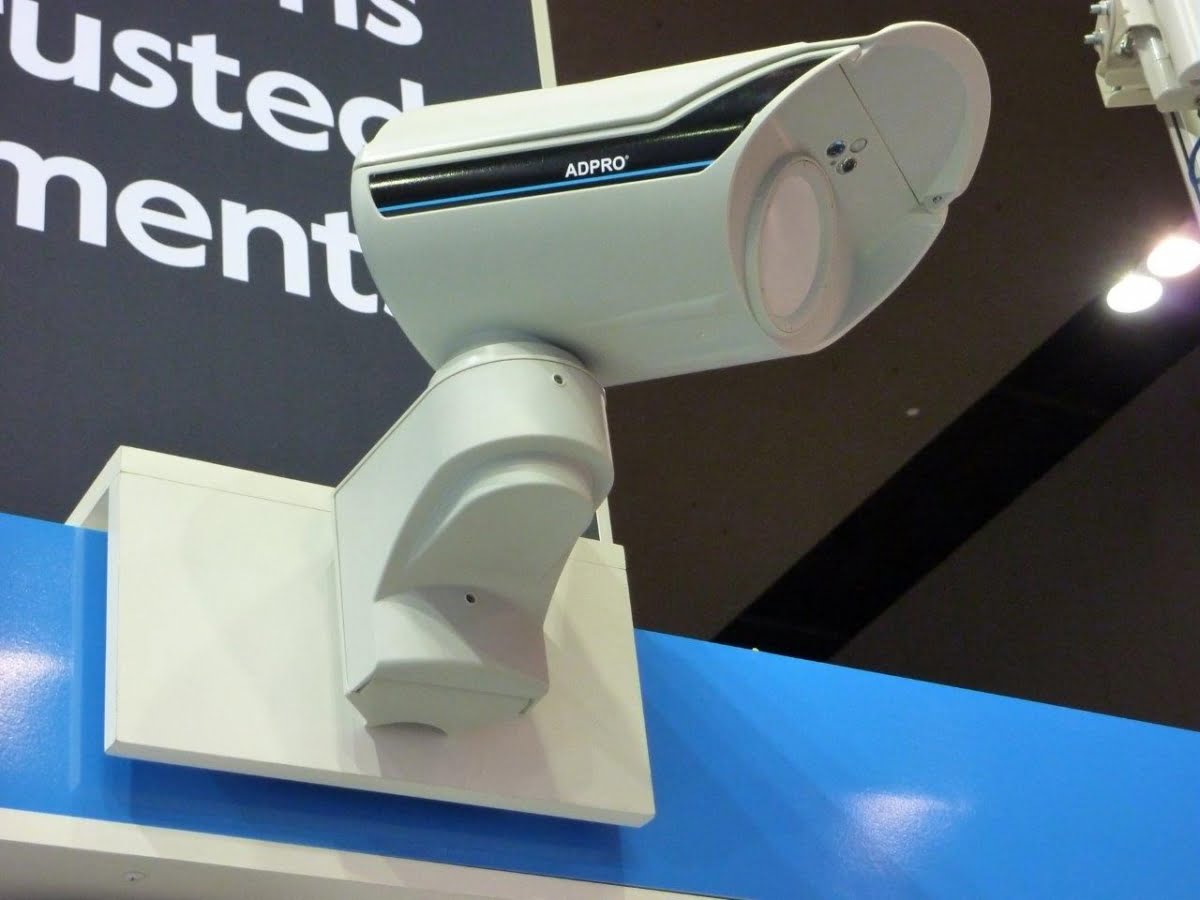
SEN’s Security 2014 Best New Product Awards came down a group including Xandem TMD from Hills, Mobotix MxActivity Sensor, Hikvision 4-Line, Vivotek’s WDR PRO camera, Paradox HD77 720p video verification sensor, AxxonNext from C.R. Kennedy, Geutebruck G-SIM, United’s PRISM, DSC’s NEO intrusion detection and automation solution and Inner Range’s SIFER reader.
Of this group, SEN’s Best New Product – Alarms went to Xandem TMD, runner up was DSC NEO. SEN’s Best New Product – Access Control went to Inner Range SIFER (runners up were Honeywell’s Vista VAM and CEM Emerald). SEN’s Best New Product – CCTV went to Mobotix MxActivity Sensor (supported by the M15-D optical and thermal camera) with Vivotek’s WDR PRO being runner up. SEN’s Best New Product – System Management went to Geutebruck’s slick G-SIM with United Technologies PRISM being runner up.

There were plenty of stands that stood out, including Axis Communications, Honeywell, CSD and Canon. SEN’s Best Stand Award for Security 2014 went to Geutebruck. Every time we walked by, we liked it more. Good looking and utterly purposeful. Runner up was United Technologies’ clever U-shaped footprint. The official best stand award went to Seadan and we liked this stand as well.
By John Adams
“Standouts in video analytics included Mobotix MxSensor Briefcam Syndex and Axxon Next”
